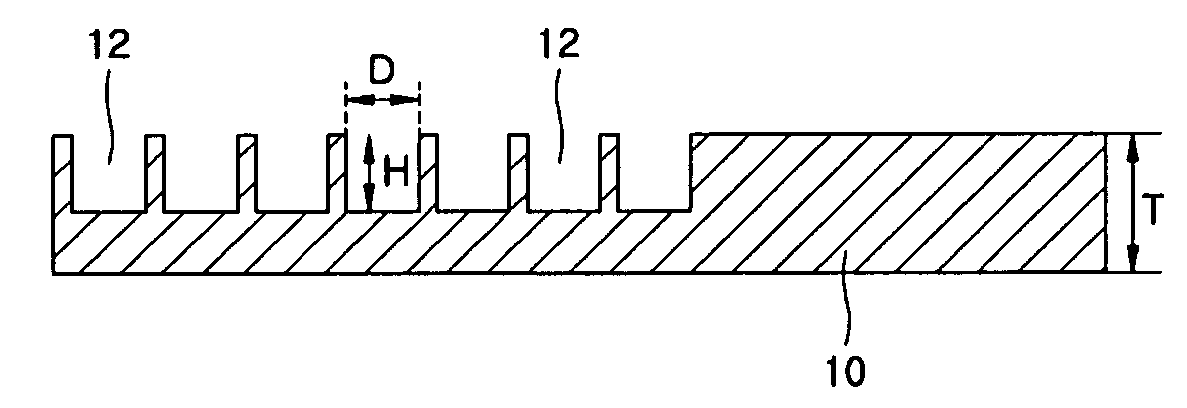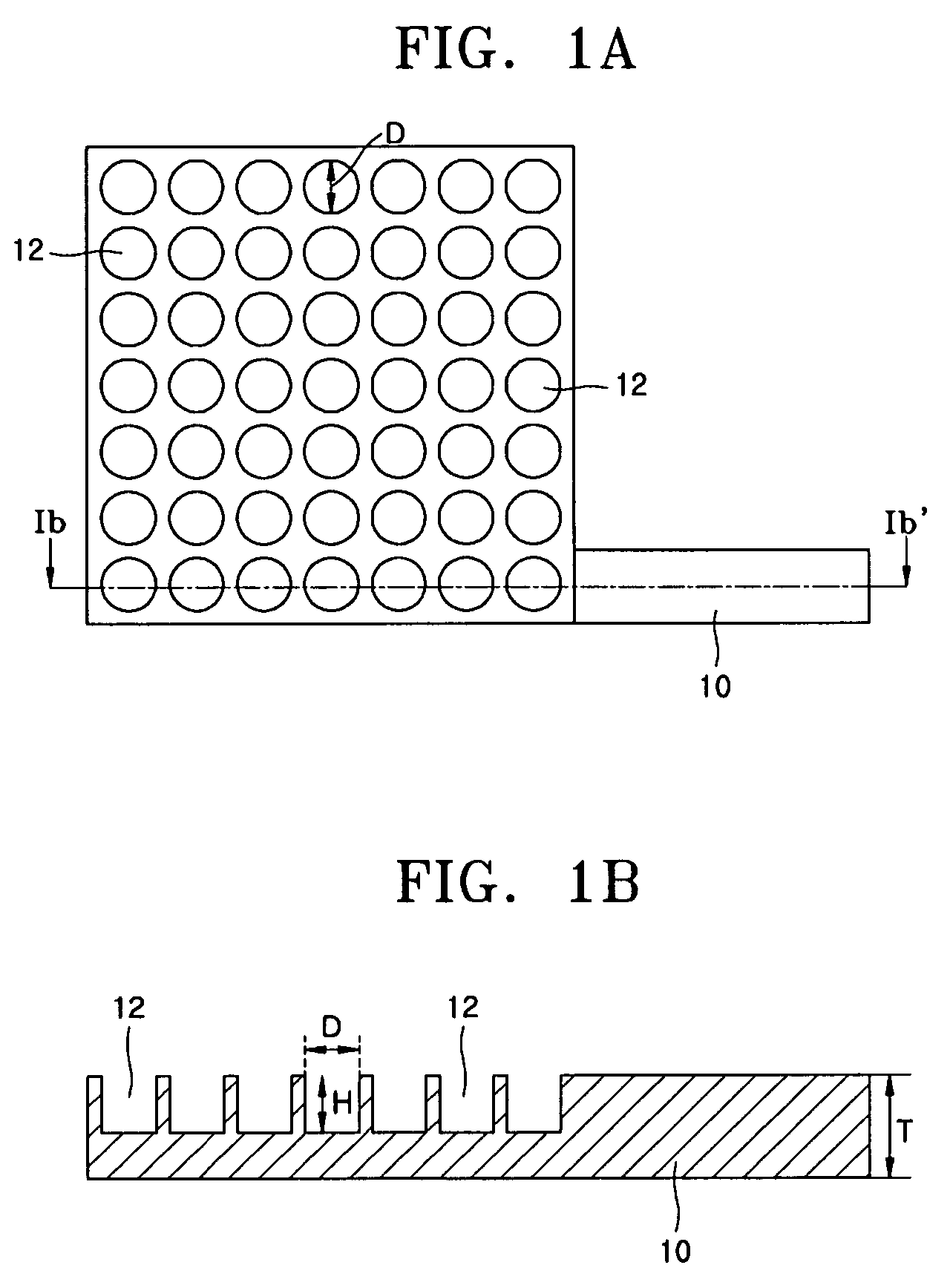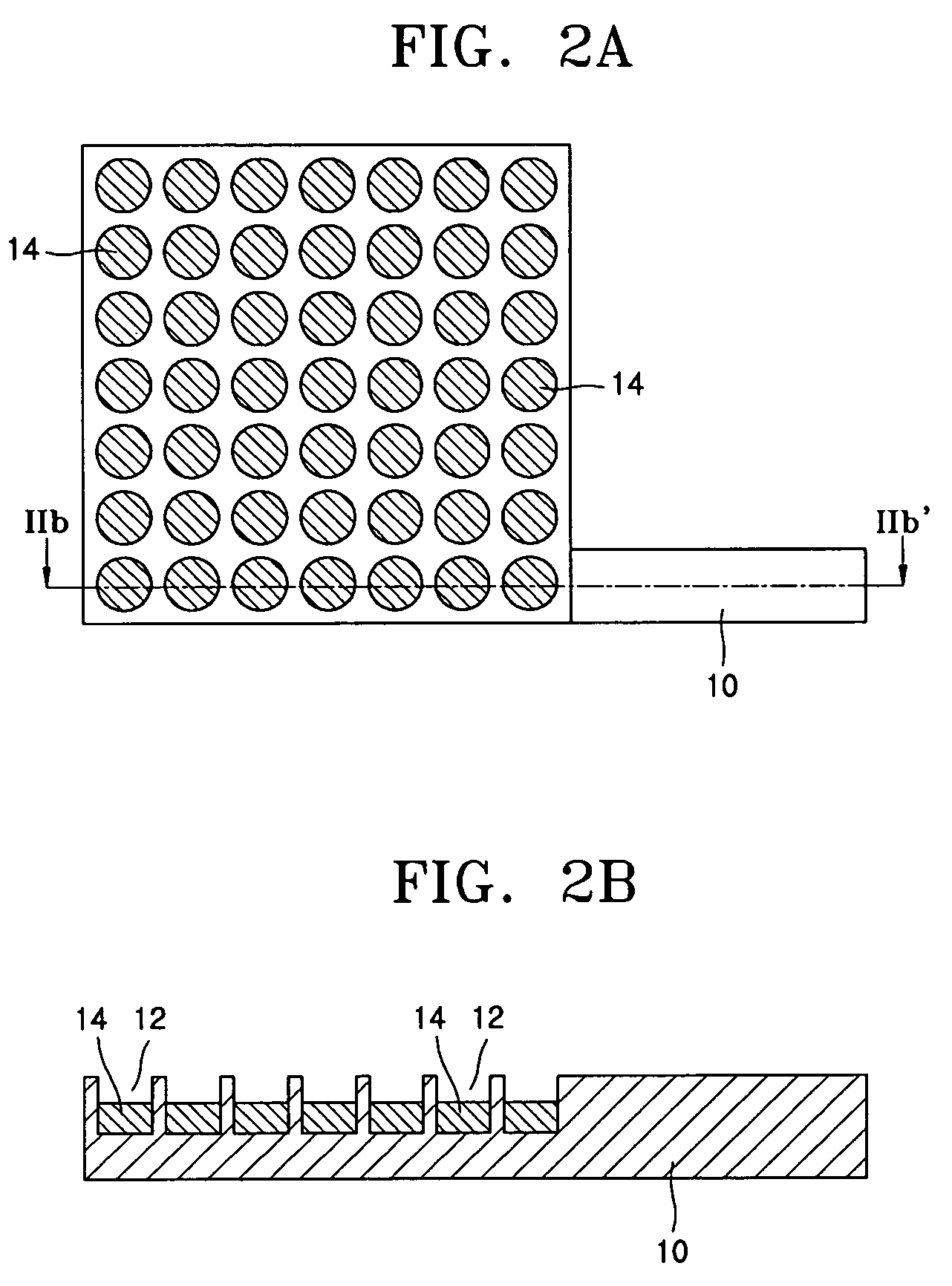Anode for lithium metal polymer secondary battery comprising surface patterned anodic current collector and method of preparing the same
a lithium metal polymer and secondary battery technology, applied in the field can solve the problems of difficult to obtain a large capacity, high production cost of libs, limited performance of lithium metal polymer secondary batteries, etc., and achieve the effects of preventing expansion and shrinking of lithium anodes due to a change in the thickness of lithium anodes, cycle stability, and improved cell li
- Summary
- Abstract
- Description
- Claims
- Application Information
AI Technical Summary
Benefits of technology
Problems solved by technology
Method used
Image
Examples
example 1
[0046] A Ni tap terminal was attached to a 2 cm×2 cm Cu current collector having a thickness of 50 μm using an ultrasonic welder. The Cu current collector was pressed with a patterning frame to form circular recesses having a diameter of 3 mm on the Cu current collector surface. The obtained recesses had a height of 35 μm.
example 2
[0047] An anodic current collector was prepared in the same manner as in Example 1, except that 2.5 mm×2.5 mm rectangular recesses were formed on a Cu current collector.
example 3
[0048] Unit cells including the anodic current collectors prepared in Examples 1 and 2 as anodes were prepared. A cathode plate was prepared using a mixture of 80 wt % of Li—Mn—Ni oxide, 12 wt % of a conducting agent and 8 wt % of a binder and a separator / liquid electrolyte system was used as an electrolyte.
PUM
| Property | Measurement | Unit |
|---|---|---|
| Thickness | aaaaa | aaaaa |
| Shape | aaaaa | aaaaa |
| Stability | aaaaa | aaaaa |
Abstract
Description
Claims
Application Information
 Login to View More
Login to View More - R&D
- Intellectual Property
- Life Sciences
- Materials
- Tech Scout
- Unparalleled Data Quality
- Higher Quality Content
- 60% Fewer Hallucinations
Browse by: Latest US Patents, China's latest patents, Technical Efficacy Thesaurus, Application Domain, Technology Topic, Popular Technical Reports.
© 2025 PatSnap. All rights reserved.Legal|Privacy policy|Modern Slavery Act Transparency Statement|Sitemap|About US| Contact US: help@patsnap.com



